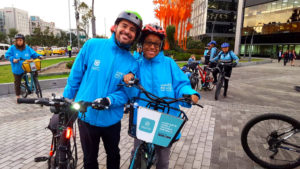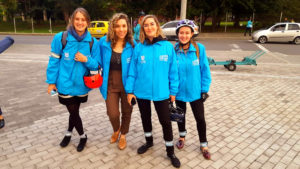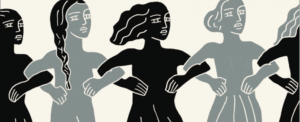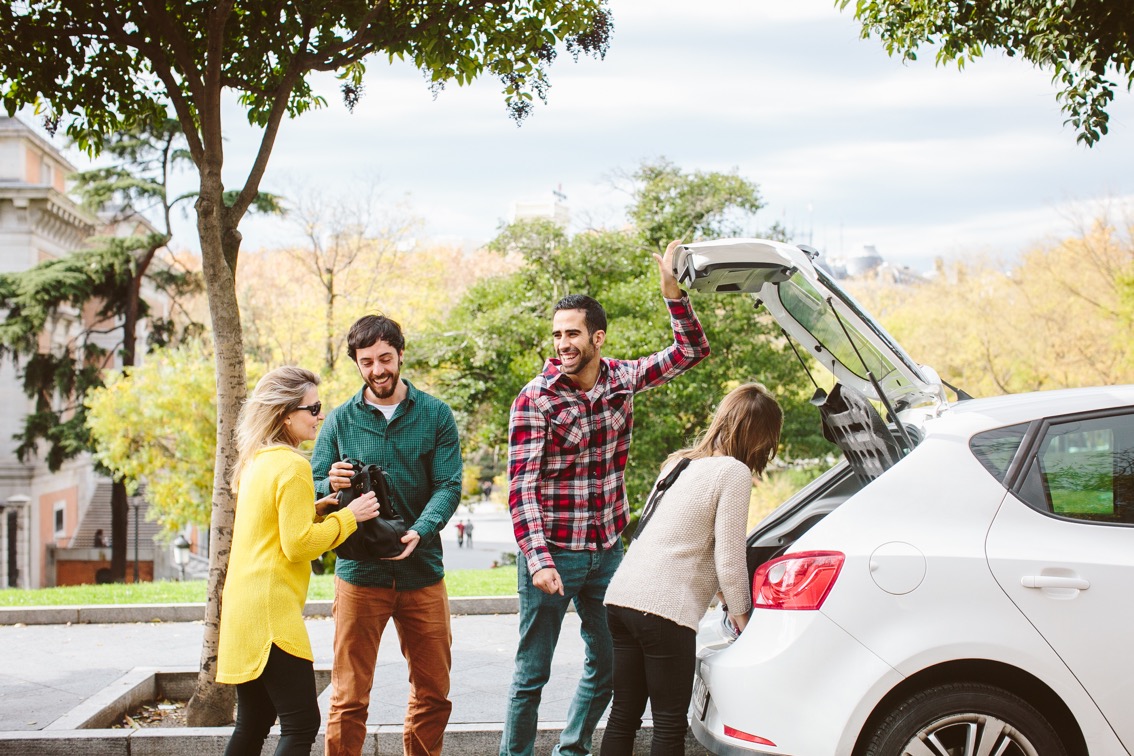What should a city do if half of its population cannot access a public service? It sounds like a somewhat outlandish question, but for Bogotá, the capital city of Colombia, this question highlights a frustrating reality. Although the city has made tremendous leaps in the field of public mobility as a result of pedestrian-friendly development, a growing network of bike paths and renovations in the TransMilenio BRT system, the city faces a mobility problem that cannot be solved with infrastructure alone.
Simply put, traveling in the city is not safe for women. In a 2017 study, an overwhelming 90 percent of female respondents stated that they felt unsafe on public streets, and 86 percent stated that they felt unsafe while using public transportation. In a 2014 study by SDJMujer, The District Secretariat for Women in Bogotá, 64 percent of respondents stated that they had experienced some form of sexual harassment while using public transportation.
Perhaps as a result of these discouraging figures, many of the public spaces in the city are occupied almost exclusively by men, especially after business hours. According to César Pinzón Medina, a Director for Capacity Management at SDJMujer, “Bogotá has problems associated with the sexual division of labor and the confinement of women in the domestic space. This translates into little or no occupation of public space by women at night.”
This cultural norm — the de facto confinement of women — presents numerous challenges to the city. The costs of marginalizing women in the economy are both well-documented and immense. Normalized aversion to public space will increase people’s reliance on privatized transportation. Most crucially of all, however, is the impact such confinement has on the city’s democracy and the individual well-being of its residents.
If access to transportation, which underpins almost every kind of economic and social activity, is limited by fear of harassment and violence for approximately 4 million residents in Bogotá, how can those residents thrive and shape the city in which they live? It’s a vast and nebulous problem, but the city of Bogotá has made headway by embracing a simple truth: if you want to get something done, organize.
Safer with Data
In 2015, the city of Bogotá began working with SafetiPin, an app that allows women to document how safe they feel throughout the city and share that information with a crowdsourced map built by other participants. The app was translated into Spanish, and the city began to coordinate with local security councils for women in order to encourage participation.
“The data collected in 2015 and 2016 allowed us to make the issue of women’s security visible,” says Medina. “It allowed us to highlight that violence against women doesn’t only occur in the private sphere, but that it occurs, day and night, in the public sphere as well.”
Since 2015, the city has used the data collected by SafetiPin to drive a variety of both public and institutional awareness campaigns. The data was used to educate and sensitize TransMilenio staff on the need to focus on women’s safety, and to clear the path for future change. Around the same time, the city founded the “Elite Group Transmilenio,” a squadron of plainclothes officers who patrol the bus system and make visible arrests of people caught sexually harassing others. In its first 20 days of operation in 2014, the group made 16 “red-handed” arrests.
Beyond building awareness, the city has been able to use the data provided by SafetiPin and its participants to identify locations in the city where interventions are needed most. In 2017, the city partnered with the Observatory for Women and Gender Equity and Dove to launch “Aclara Bogotá,” a campaign that installed self-sustaining solar lights in dark public spaces where women felt unsafe. The city also identified patterns in women’s perceptions of security, such as a common fear of waterfronts that are poorly lit and inaccessible to bikes, and was able to make improvements accordingly.

What’s ahead for Bogotá
The introduction of SafetiPin has proven extremely popular in Bogotá. The SafetiPin map has collected more than 19,000 audits to date that grade different locations throughout the city on metrics such as illumination, gender diversity and “eyes on the street” that help promote women’s safety.
In 2018, SDJMujer Bogotá and CAF – Development Bank of Latin América’s project Me Muevo Segura, which plans to expand the city’s work with SafetiPin, was declared a winner of the TUMI Global Urban Mobility Challenge, a competition promoted by the German Federal Ministry for Economic Cooperation and Development (BMZ) and the Transformative Urban Mobility Initiative (TUMI). The total prize to roll out the project is up to 200,000 euros.
“Innovation is not optional anymore and the TUMI initiative is contributing to the transformation of urban mobility” says Daniel Moser, Head of the TUMI Management at GIZ. “Bogotá’s vision to make its mobility safer and more accessible for women and girls is very bold and ambitious. We are proud to be part of its implementation.”

Medina explains what the city plans to do with the prize: “Within the TUMI framework, and with the support of CAF, we will be able to assess 15,547 kilometers of road within the city through the use of 10 private vehicles that will supplement our existing participation. We will also be able to survey 12,000 women over the age of 15 about the public transportation offerings.”
The city also plans to design interventions based on data and past observations, such as how women tend to take longer routes to ensure their own safety and how they tend to feel safer in areas with high densities of street vendors. “They feel that somebody could help them if violence were to break out,” Medina explains.
Tu My Tran, a Senior Officer of EcoMobility at ICLEI – Local Governments for Sustainability, coordinates the TUMI Network, which is a peer-to-peer exchange platform for mobility experts. She believes that the project can offer some important lessons for cities worldwide. “Right now, lots of international organizations are concerned about stakeholder engagement and data-driven policy making but many of them are still exploring how to combine this work effectively. What Bogotá is doing with SafetiPin — engaging local women’s organizations in creating data-driven solutions — could be an interesting model for future projects.”

After all, residents are often the best experts when it comes to their own neighborhoods, and the support of these individuals can often make or break a municipal project. If participation in a project is common and the benefits are well understood, when it comes time for residents to make a change — say by adapting to construction noise or more lighting — they’re more likely to be on board.
When projects don’t gain community support they can easily go awry. In Fort Lauderdale, Florida, for example, a federally-funded streetcar project known as The Wave was scrapped due to popular opposition, after having racked up $33 million in expenses.
Editor’s Picks – Related Articles:

“Girl Safety: Why Education is not Preparing Girls for the Real World“

The Me Muevo Segura project offers information regarding what new projects or initiatives are needed in the city, and it provides a scannable idea of how much support those initiatives might get,” says Tran. Angie Palacios, Gender and Transport Specialist at CAF adds: “To map out the city with objective data using a set of variables that affect the perception women have of their city is an unprecedented opportunity to first, showcase the introduction of scalable technology for gender-related data collection, and second, to analyze public space and transport planning and design beyond infrastructure. In other words, the results will help to understand the more subtle gender-dynamics that take place in and around public spaces.”
Medina is also excited about what the project means for the inclusion of women in urban planning elsewhere. “We want to guarantee women’s right to a life free of violence in the public space,” he says. “And we want to encourage cities to design and develop with women in mind, because in our mind a city built for women is a city built for everyone.”










